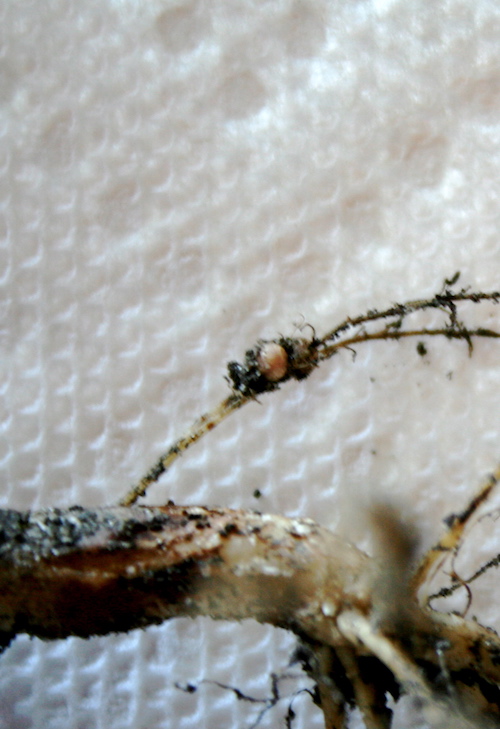Back in the day, I worked for a large agricultural supply cooperative in Minnesota, which sold seed to farmers. To say that the co-op’s seed guys were fixated on nitrogen fixation—the way plants add nitrogen to the soil— would be an understatement.
Nitrogen fixing is the process by which certain legumes take nitrogen from the air (N2) and, with the help of bacteria, transform it to nitrogen plants can use (NH3). Farmers love this beneficial habit because they can plant corn (a huge nitrogen user) after soybeans (a nitrogen fixer) and not have to add as much fertilizer. The co-op’s seed guys had a special soybean seed that was a nitrogen fixing machine — but that’s another story.
Recently, a fellow gardener brought up the issue of whether green beans in Minnesota were in the ground long enough to add nitrogen to the soil. I have always assumed so — but his comment got me wondering. This weekend I pulled up one of my bush bean plants to check and there they were — those warty little nobs on the root of the bean that signal nitrogen fixation. How much nitrogen is fixed depends on the soil, the bean, and a number of other factors that are beyond my pay grade. But it is a good idea to rotate beans into garden beds in which the soil may have been depleted by heavy nitrogen using plants, such as tomatoes. It’s also a good idea to simply cut the bean plant down to soil level at the end of the season, leaving the roots there to add nitrogen to the soil as they decompose.
Nitrogen fixing is one of the reasons many gardeners will plant a cover crop of legumes on new garden beds. The University of Minnesota has a good article about nitrogen fixation and another one on cover crops that you might want to read for additional information.

This is great information, especially leaving the roots in the soil. This is another great reason to keep a garden journal so you know where things were planted from year to year and can make the most of natural soil enhancement.
Thanks!